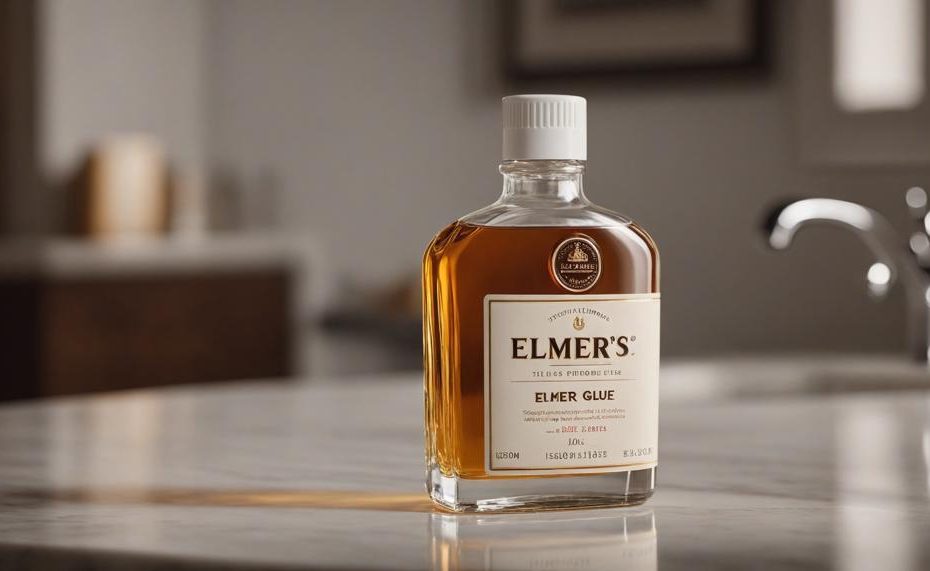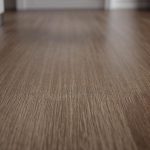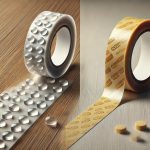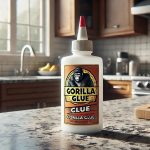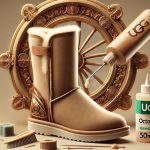Elmer’s glue, the ubiquitous crafting companion, is surprisingly versatile. While primarily known for its adhesive prowess, it can indeed function as a sealant in certain scenarios. Let’s dive into the nitty-gritty to understand where Elmer’s glue shines and where it might fall short.
Elmer’s glue, when dried, forms a strong bond that effectively seals porous materials like paper and wood. This makes it an excellent choice for craft projects or light-duty household repairs. Its water-resistant properties add an extra layer of protection, making it suitable for surfaces that may occasionally encounter moisture.
However, it’s important to note that Elmer’s glue is not entirely waterproof. While it can withstand minor splashes, it is not designed for high-moisture environments such as bathrooms or outdoor spaces where exposure to the elements is a concern. For these applications, a dedicated sealant designed to handle continuous water exposure would be a more reliable choice.
Key Takeaways:
- Effective for Crafts and Light Repairs: Ideal for sealing paper and wood in craft projects or minor household fixes.
- Water-Resistant, Not Waterproof: Can handle occasional moisture but not suitable for areas with constant water exposure.
- Limitations in High-Moisture Areas: Not recommended for bathrooms, kitchens, or outdoor applications.
- Not for Heavy-Duty Sealing: For structural applications, a specialized sealant is necessary.
Understanding the strengths and limitations of Elmer’s glue helps you make informed decisions about its use. While it offers great versatility for small projects, it’s not the catch-all solution for every sealing need.
Table of Contents
- 1 Sealing The Deal With Elmer’s
- 2 Why Elmer’s Glue Shines as a Sealant
- 3 Best Materials to Seal with Elmer’s Touch
- 4 Your Step-By-Step Guide to Sealing with Elmer’s
- 5 Where Elmer’s Glue Might Not Seal the Deal
- 6 Is Elmer’s Glue a Felt-Friendly Choice?
- 7 Elmer’s Glue and Fabrics: A Sticky Tale
- 8 Does Elmer’s Glue Hold Up on Wood?
- 9 Conclusion
Sealing The Deal With Elmer’s
Elmer’s glue can be a handy tool for sealing projects, particularly when working with porous materials like wood and paper. However, when stacked against traditional sealants, there are distinct differences in effectiveness and durability.
Effectiveness:
- Elmer’s Glue: Known for its strong adhesive properties, it effectively seals gaps in porous materials. Its water resistance once dry makes it suitable for projects that may encounter occasional splashes.
- Traditional Sealants: Designed specifically for sealing, they excel in creating airtight and watertight seals. Traditional sealants are tailored for various materials and conditions, ensuring a more reliable seal in diverse environments.
Durability:
- Elmer’s Glue: While it offers a robust bond for light-duty tasks, its lack of waterproofing limits its use in high-moisture environments like bathrooms or outdoor areas. Over time, exposure to water can compromise the seal.
- Traditional Sealants: These products are formulated to withstand harsh conditions, including continuous water exposure, temperature fluctuations, and structural stress. They provide long-lasting durability for both indoor and outdoor applications.
| Aspect | Elmer’s Glue | Traditional Sealants |
| Adhesive Strength | Strong, especially with porous materials like wood and paper. | Very strong, designed for a variety of materials including metal, plastic, and concrete. |
| Water Resistance | Water-resistant, not waterproof. Suitable for occasional splashes. | Waterproof, ideal for continuous exposure to water and moisture. |
| Durability | Good for light-duty tasks; not ideal for high-moisture or structural applications. | Excellent for heavy-duty and long-term sealing, even in harsh conditions. |
| Applications | Best for crafting, light woodworking, and other non-structural projects. | Best for plumbing, roofing, automotive, and other structural tasks. |
For those seeking a versatile, easy-to-use adhesive for light-duty projects, Elmer’s glue is a solid choice. But when it comes to tasks requiring high durability and waterproofing, traditional sealants are the superior option.
Why Elmer’s Glue Shines as a Sealant
What makes Elmer’s Glue an effective sealant lies in its unique properties and versatile application. Here’s a breakdown of why it excels:
Strong Bonding Capabilities
Elmer’s Glue creates a robust bond between various surfaces. Its adhesive strength is notable, ensuring that materials like wood, paper, and even some fabrics stay firmly attached.
This bond is not just strong but also flexible, accommodating slight movements and expansions in the materials.
Protective Barrier
When applied in thin layers, Elmer’s Glue forms a protective barrier over surfaces. This barrier is particularly effective in safeguarding against dust and minor abrasions.
For projects that require a clean finish and protection from everyday wear and tear, this property is invaluable.
Water Resistance
Though not entirely waterproof, Elmer’s Glue offers significant water resistance. This makes it suitable for sealing projects where occasional splashes of water might be a concern.
It’s ideal for indoor projects where exposure to water is limited, such as sealing decorative items or craft projects.
Easy Application and Cleanup
Elmer’s Glue is user-friendly. It can be easily applied with a brush or directly from the bottle, and any excess can be cleaned up with water before it dries.
This ease of use makes it accessible for both DIY enthusiasts and professional crafters.
Versatility
Its versatility is another reason for its effectiveness as a sealant. Elmer’s Glue can be used on a variety of materials including wood, paper, cardboard, and some plastics.
This makes it a go-to product for mixed-media projects.
Cost-Effective
Compared to traditional sealants, Elmer’s Glue is often more affordable, making it an economical choice for many projects.
Its availability and low cost do not compromise its effectiveness for light-duty sealing tasks.
Eco-Friendly
Elmer’s Glue is non-toxic and safe to use around children and pets, which is a significant advantage for household projects and educational settings.
Best Materials to Seal with Elmer’s Touch
Elmer’s glue is ideal for sealing porous materials due to its ability to penetrate and form a strong bond. Here’s a detailed look at the materials best suited for sealing with Elmer’s glue:
- Paper: Given its high porosity, paper readily absorbs Elmer’s glue, creating a sturdy bond. This makes it perfect for crafts, repairs, and sealing documents or decorations.
- Cardboard: Slightly more robust than paper, cardboard’s thicker structure benefits significantly from Elmer’s glue. When sealing cardboard, it’s crucial to coat all edges thoroughly. Clamping the cardboard during the drying process can help prevent any potential warping.
- Wood: Wood’s porosity varies with grain and type, but Elmer’s glue excels at bonding wooden surfaces. Lightly sanding the wood before application ensures better adhesion, and clamping the pieces together during drying maximizes the bond strength.
- Fabric: Elmer’s glue is also suitable for fabric, offering flexibility and durability. Pre-washing the fabric removes any finishes that could hinder the glue’s effectiveness. Applying the glue evenly and allowing ample drying time ensures the fabric remains pliable and well-bonded.
Your Step-By-Step Guide to Sealing with Elmer’s
To effectively use Elmer’s glue as a sealant for your projects, follow these detailed steps:
Preparation:
- Materials: Gather Elmer’s glue, a mixing container, a brush or sponge, and the item to be sealed.
- Mixing: Combine one part water with one part Elmer’s glue to create a thinner, more manageable solution.
Application:
- Initial Layer: Using a brush or sponge, apply a thin, even layer of the glue mixture over the surface you want to seal.
- Drying Time: Allow each layer to dry for approximately 30 minutes to an hour before applying the next layer. This ensures a smooth, even seal.
- Subsequent Layers: Apply additional layers as needed for durability. Each layer enhances the sealant effect, particularly on porous surfaces like paper, cardboard, and wood.
Finishing:
- Final Check: Inspect the sealed surface for uniformity. If any areas seem uneven, apply another thin layer and let it dry.
- Curing: Once the final layer is applied, allow the entire project to dry thoroughly, preferably overnight, to ensure a robust seal.
Key Tips:
- Surface Suitability: Elmer’s glue works best on porous materials such as paper, cardboard, and wood. It penetrates these surfaces effectively, forming strong, lasting bonds.
- Avoid Non-Porous Surfaces: Do not use Elmer’s glue on non-porous surfaces like glass or plastic as it will not adhere well and will not provide an effective seal.
Where Elmer’s Glue Might Not Seal the Deal
The short answer is no, Elmer’s Glue is not the best choice for sealing outdoor projects like wooden furniture. While it’s a versatile adhesive for many indoor crafts and repairs, its effectiveness diminishes significantly when exposed to outdoor elements.
Reasons Elmer’s Glue Falls Short for Outdoor Use:
- Limited Waterproofing: Elmer’s Glue is not designed to withstand prolonged exposure to moisture. Outdoor furniture often faces rain, dew, and humidity, which can break down the glue, leading to weak bonds and potential failure.
- Temperature Sensitivity: Extreme temperatures can affect Elmer’s Glue. High heat can cause it to soften, while freezing temperatures can make it brittle, neither of which is ideal for outdoor furniture exposed to varying weather conditions.
- UV Resistance: UV rays from the sun can degrade many adhesives over time. Elmer’s Glue does not have UV stabilizers, making it prone to breaking down and losing its adhesive properties when subjected to direct sunlight for extended periods.
Recommended Alternatives:
For outdoor projects, it’s essential to use adhesives specifically formulated for outdoor conditions. Here are some alternatives:
| Adhesive | Waterproof | UV Resistant |
| Gorilla Wood Glue | Yes | Moderate |
| Titebond III | Yes | Yes |
| Liquid Nails Fuze*It | Yes | Yes |
Tips for Outdoor Sealing:
- Preparation: Sand and clean the wood surface to ensure the adhesive bonds properly.
- Application: Follow the manufacturer’s instructions for application and drying times.
- Finishing: Use a water-resistant sealant or varnish over the adhesive to provide an additional layer of protection against the elements.
Using adhesives designed for outdoor use will ensure that your wooden furniture remains sturdy and intact, even in harsh weather conditions.
Is Elmer’s Glue a Felt-Friendly Choice?
No, Elmer’s Glue is not a felt-friendly choice.
Water-Based Composition:
Elmer’s Glue is primarily water-based, which works great for paper but not for felt. Felt is a textile that often doesn’t respond well to water-based adhesives, as they tend to seep through and weaken the material’s structure.
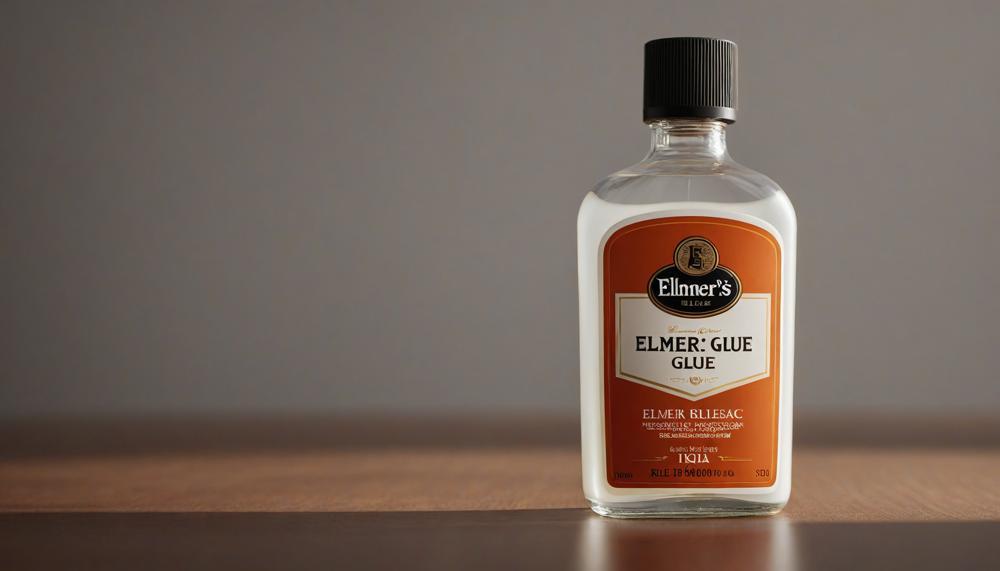
Durability Issues:
While Elmer’s Glue might provide a temporary bond for some felt types, it’s not durable. For projects requiring a strong and lasting bond, Elmer’s Glue falls short.
It lacks the necessary adhesion strength and flexibility needed for felt crafts or applications that undergo frequent handling or movement.
Better Alternatives:
For bonding felt, fabric-specific adhesives are more suitable. Products like Aleene’s Fabric Fusion or Beacon Fabri-Tac offer better results.
These adhesives are designed to handle the unique properties of textiles, ensuring a robust and flexible bond that stands the test of time.
Project Specifics:
The effectiveness of Elmer’s Glue on felt depends heavily on the specific felt and project.
Craft felt might bond decently in low-stress applications, but for anything requiring resilience, Elmer’s Glue is inadequate.
Elmer’s Glue and Fabrics: A Sticky Tale
Elmer’s glue is incredibly versatile, offering numerous uses for fabric and sealing projects. Its benefits make it a popular choice for various crafting and DIY endeavors.
Potential Uses of Elmer’s Glue:
Temporary Fabric Bonds:
Elmer’s glue works well for temporary fabric bonding. For instance, when arranging patterns or holding pieces in place before sewing, it provides a quick and easy solution.
Fabric Sealing:
Ideal for sealing raw edges of fabrics to prevent fraying. This is particularly useful in projects involving delicate or loose-woven materials.
Creating Fabric Stiffeners:
Elmer’s glue can be mixed with water to create a fabric stiffener. This is perfect for crafting projects like fabric bowls, lampshades, or stiffened fabric flowers.
Arts and Crafts:
It’s a go-to for creating fabric-based artwork, collages, or mixed media projects. The clear drying property ensures a neat and clean finish.
Decorative Applications:
Great for applying embellishments like glitter, sequins, or small beads to fabric. Its clear drying nature helps maintain the aesthetic of the decorations.
Advantages:
- Clear Drying: Leaves a clean, invisible finish.
- Non-Toxic: Safe for use in projects involving children.
- Easy Cleanup: Can be washed off with water while still wet, making it user-friendly.
Limitations:
- Moisture Vulnerability: Not ideal for projects exposed to water or high humidity.
- Durability Issues: Not suitable for heavy-duty or outdoor projects due to its lack of resistance to elements.
For more demanding tasks, consider alternatives like Mod Podge, polyurethane, or epoxy, which offer greater durability and resistance to environmental factors.
Application Tips:
Does Elmer’s Glue Hold Up on Wood?
Yes, Elmer’s Glue can hold up on wood, but the effectiveness varies depending on the specific type of Elmer’s Glue you use. For woodwork and carpentry, it’s best to use Elmer’s Carpenter’s Wood Glue or Elmer’s ProBond Advanced. These specialized glues are formulated to provide strong, durable bonds on wooden surfaces.
Elmer’s Carpenter’s Wood Glue is designed specifically for woodworking projects. It creates a bond stronger than the wood itself, making it suitable for both interior and exterior applications due to its water-resistant properties. The glue penetrates the porous surface of the wood, ensuring a tight bond that holds up under stress.
Elmer’s ProBond Advanced is another excellent choice for wood. This glue offers a professional-level bond with the benefit of being non-toxic and easy to clean up with water. It works well on a variety of materials, including wood, and is known for its strong adhesion and durability.
For minor repairs or smaller projects, regular Elmer’s White School Glue can also be used, but it’s not recommended for heavy-duty applications or structural joints due to its lower strength and lack of water resistance.
Conclusion
Elmer’s glue, a staple in every crafting toolkit, extends its functionality beyond simple adhesion to act as a light-duty sealant.
Ideal for porous materials like paper, wood, and fabric, it forms a strong bond that protects against minor abrasions and dust. This makes it a reliable choice for many indoor projects.
The Strengths of Elmer’s Glue
- Bonding Capabilities: Elmer’s glue excels in creating robust and flexible bonds, especially with porous materials. This flexibility ensures that the materials remain intact even with slight movements and expansions.
- Protective Barrier: When applied in thin layers, Elmer’s glue forms a protective barrier that safeguards against everyday wear and tear. It is particularly effective in craft projects and decorative items that require a clean finish.
- Water Resistance: While not entirely waterproof, Elmer’s glue offers significant resistance to occasional moisture, making it suitable for projects that might encounter splashes. However, for high-moisture environments like bathrooms or outdoor areas, traditional sealants are a more reliable option.
- Ease of Use: The user-friendly nature of Elmer’s glue allows for easy application and cleanup, making it accessible for both DIY enthusiasts and professional crafters. Its affordability and non-toxic composition further enhance its appeal for household and educational projects.
Where Elmer’s Glue Falls Short
Despite its versatility, Elmer’s glue is not suited for heavy-duty or high-moisture sealing tasks. It lacks the waterproofing needed for continuous exposure to water and the durability required for structural applications. For these scenarios, traditional sealants designed to handle diverse materials and harsh conditions provide a more robust solution.

